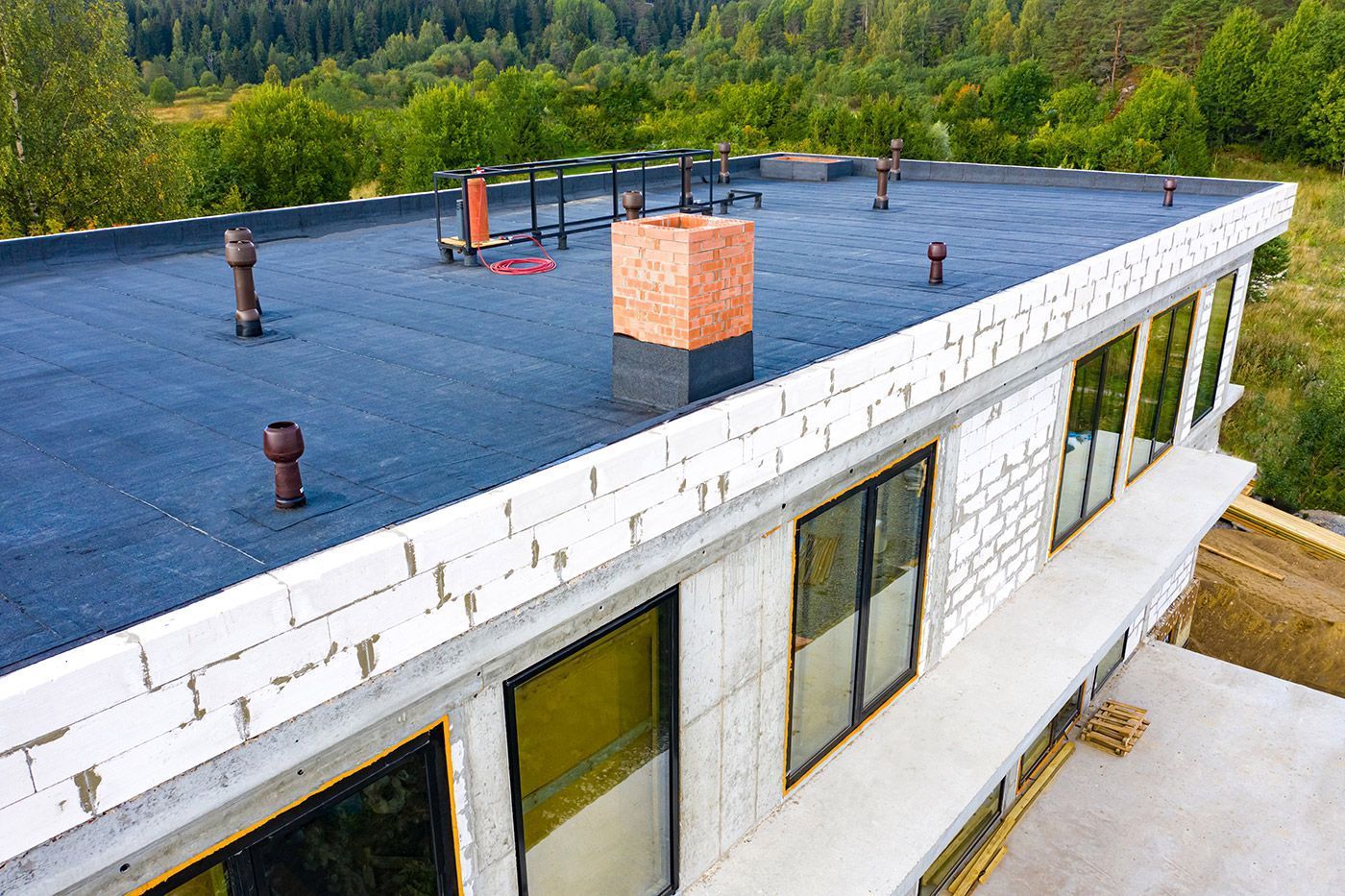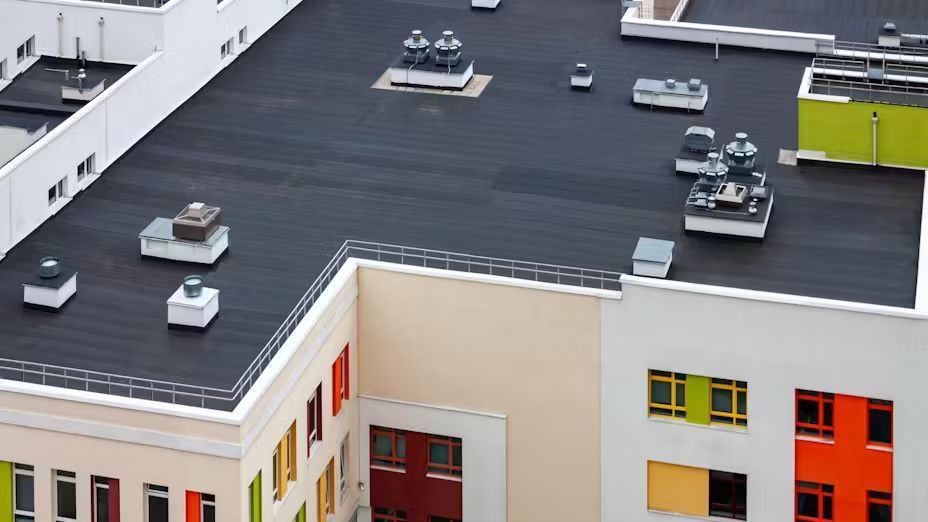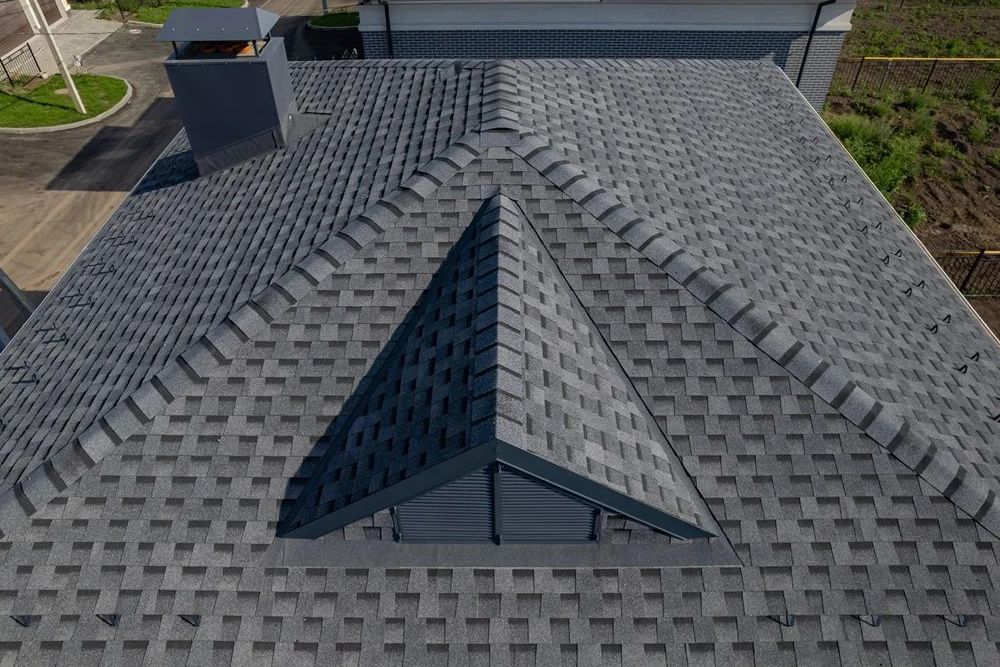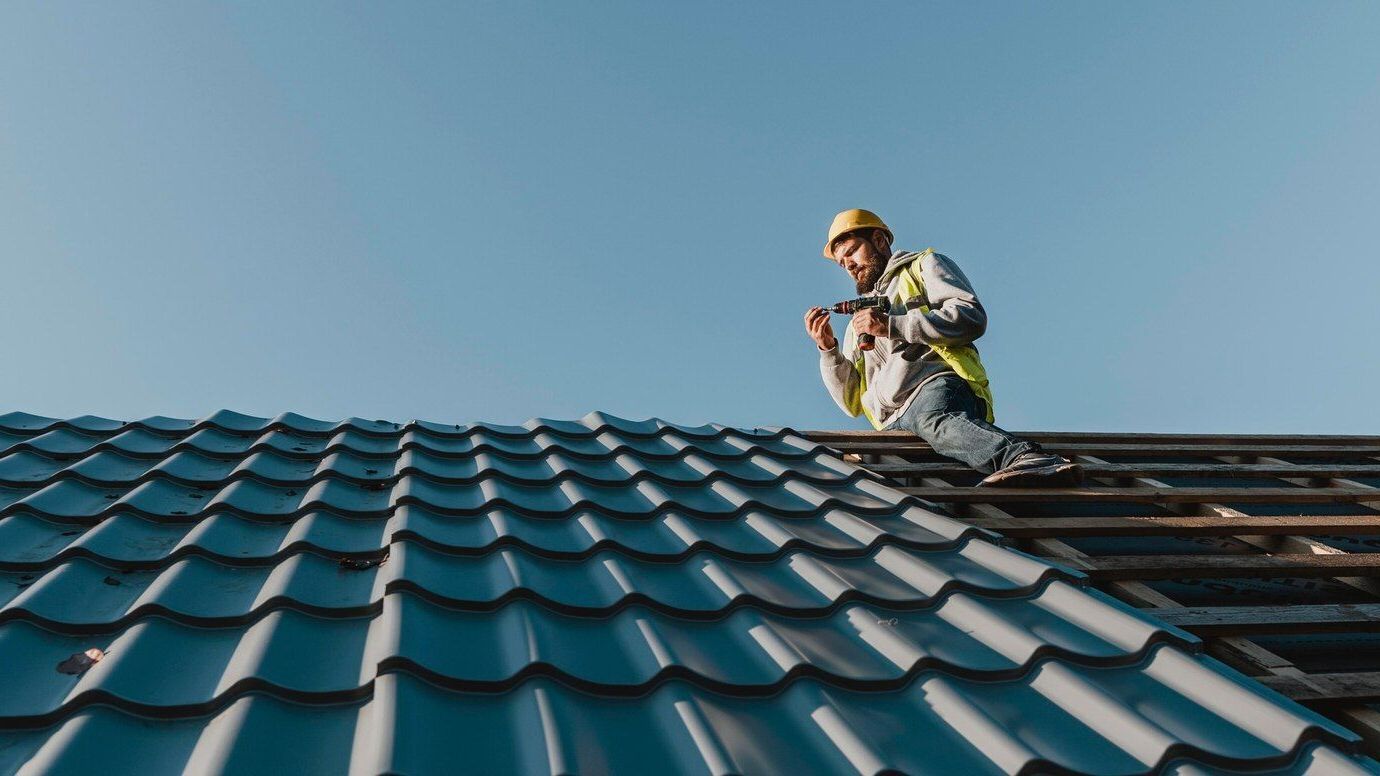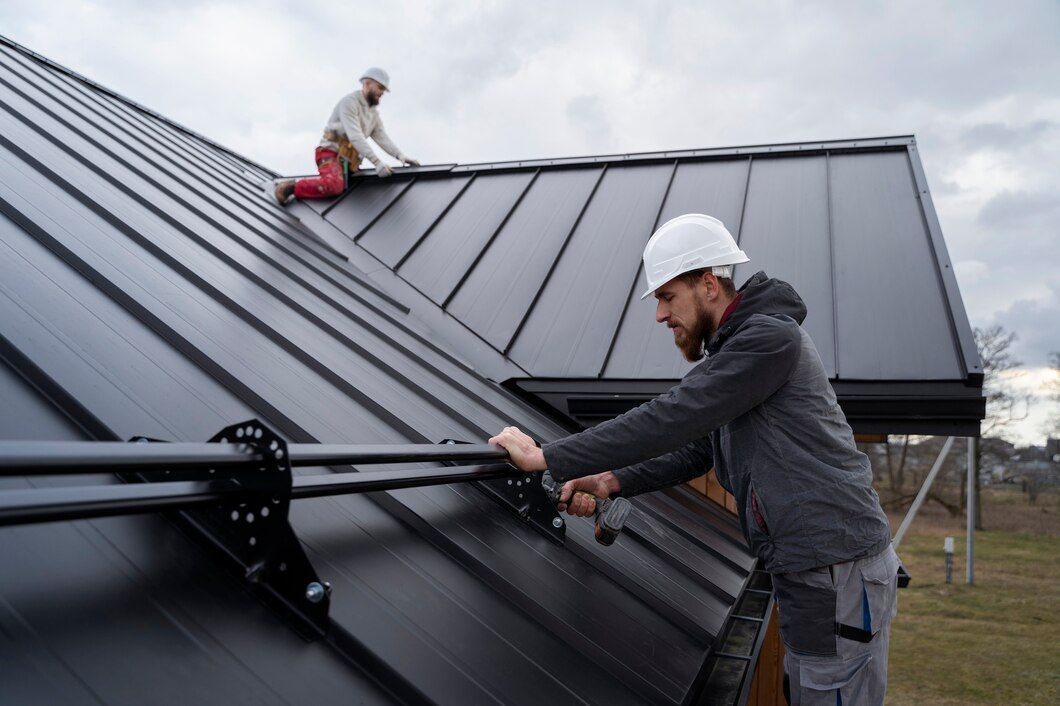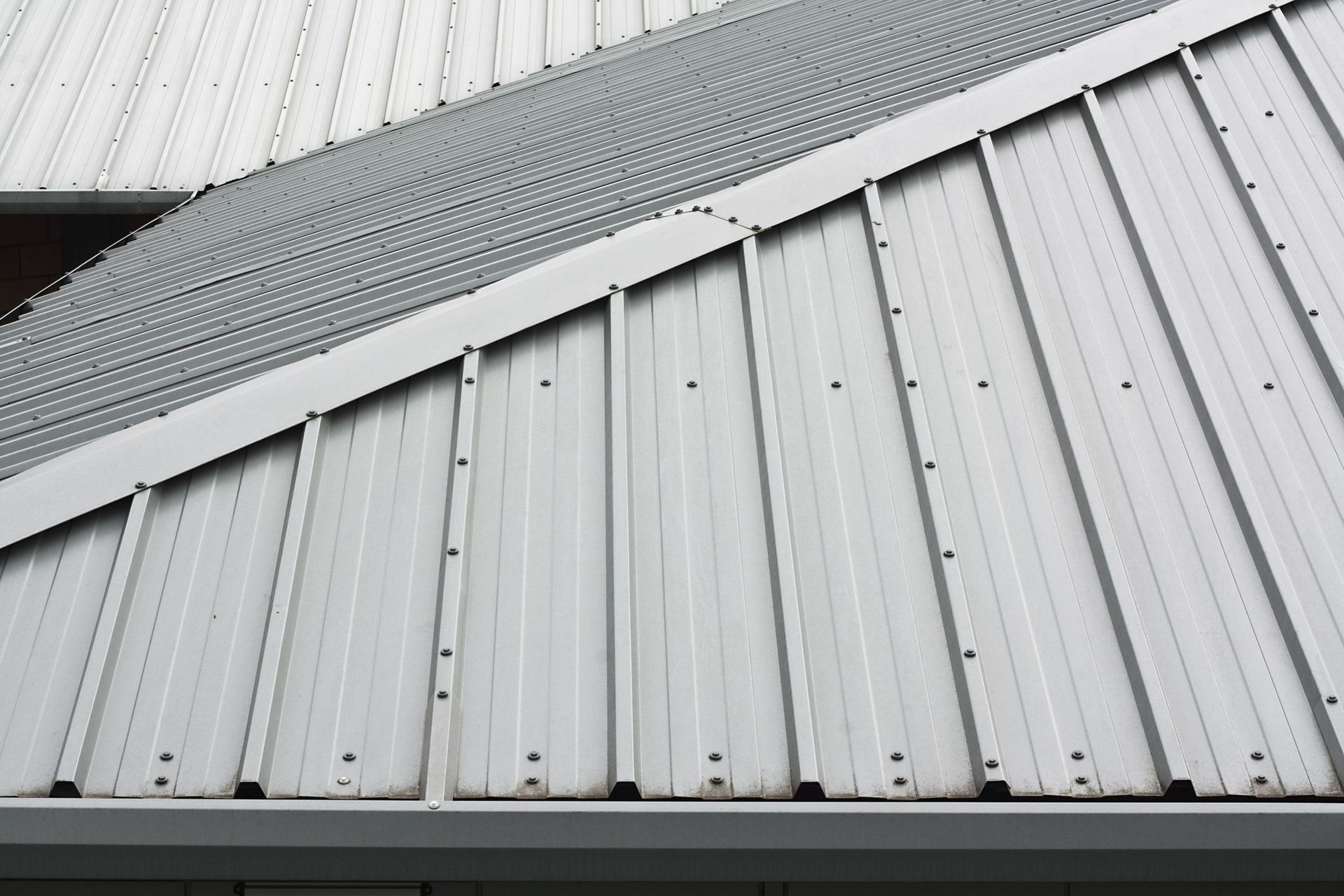What is TPO Roof: Everything About TPO Roofing
Thermoplastic Polyolefin (TPO roofing) is a popular choice for commercial roofing due to its durability and energy-saving properties. This single-ply roofing membrane offers exceptional resistance to UV exposure, ozone, and chemicals, making it highly effective in varied climate conditions. Whether you need a new roof installation or a roof replacement, understanding the benefits and installation process of TPO roofing can help you make a well-informed decision. Explore the key features, advantages, and maintenance tips to ensure your roof remains in top condition for years to come.
What is TPO Roofing Material?
Thermoplastic Polyolefin (TPO roofing) is a single-ply membrane known for its heat-reflective and energy-efficient properties—making it a smart choice for commercial roof repair and residential projects alike. Made from ethylene propylene rubber, TPO combines strength and flexibility, offering a durable, low-maintenance solution for property owners in Broken Arrow, OK.
A major benefit of TPO roofing in commercial roof repair is its UV-resistant surface, which helps lower cooling costs by keeping interiors cooler. Its energy efficiency is perfect for eco-conscious businesses, while its flexibility allows it to handle extreme weather, resist punctures and impact damage, and deliver a longer-lasting roof.
A standout feature of TPO roofing is its watertight seam technology—heat-welded seams create a strong, leak-resistant barrier, preventing water infiltration and roof damage. While TPO roofing delivers exceptional durability and efficiency, it’s important to weigh all factors before selecting the right roofing system for your needs.
In conclusion, TPO roofing combines innovation and reliability, making it a top roofing choice for property owners. Continue reading to explore the benefits, potential drawbacks, and comparisons between TPO and other roofing solutions like PVC roofing.
TPO Roofing: A Cost-Effective and Energy-Efficient Solution
TPO roofing, or thermoplastic polyolefin roofing, has become a preferred option for commercial and residential roofing due to its affordability and energy efficiency. One of its standout benefits is its cost-effectiveness—TPO roofing is typically more budget-friendly than alternative roofing materials, making it a smart choice for property owners in Broken Arrow, OK. Additionally, its reflective surface helps reduce heat absorption, leading to lower cooling costs during hot summers.
Another key advantage of TPO roofing is its durability. This material resists dirt, mold, and punctures, allowing it to maintain its structural integrity with minimal maintenance. Its flexibility enables it to withstand expansion and contraction caused by temperature fluctuations, ensuring long-lasting protection. However, one potential downside is the inconsistency in quality among different TPO roofing products, which can affect longevity and lead to frequent repairs if low-quality materials are used.
While TPO roofing is often praised for its easy installation, proper expertise is essential to avoid issues like seam failures and water leaks. To ensure a high-performing and durable TPO roof, selecting premium materials and hiring skilled roofing professionals in Broken Arrow, OK, is crucial.
The Benefits of TPO Roofing
TPO roofing has become increasingly popular due to its wide range of benefits. One of its standout features is energy efficiency. The light-colored, reflective surface of TPO helps reduce energy consumption by deflecting UV rays, keeping indoor temperatures cooler and lowering electricity costs.
TPO roofing is also valued for its durability and flexibility. It is highly resistant to tears, punctures, and impact damage, making it a long-lasting option compared to traditional roofing materials. Additionally, TPO is lightweight and easy to install, allowing for faster and more cost-effective roofing projects. The heat-welded seams further enhance durability by creating a watertight seal that prevents leaks.
Another significant advantage is environmental friendliness. TPO roofing is recyclable, reducing landfill waste. It also lacks harmful chemicals such as chlorine, making it a safer and more sustainable choice. Due to its versatility, TPO roofing is well-suited for commercial, residential, and industrial buildings.
By choosing TPO roofing, property owners can benefit from a durable, cost-effective, and eco-friendly roofing system that offers long-term protection.
The Drawbacks of TPO Roofs
While TPO roofing is highly regarded for its energy efficiency and affordability, there are a few factors property owners should consider before installation. One common challenge is inconsistent product quality. Since thermoplastic roofing formulations vary by manufacturer, some TPO materials may not be as durable, leading to frequent maintenance or premature wear. To avoid these issues, it’s essential to choose trusted roofing brands known for high-quality materials.
Another consideration is long-term cost. Although TPO roofing is initially budget-friendly, some property owners have faced higher repair costs over time due to seam failures or punctures, particularly in harsh weather conditions. Ensuring proper maintenance can help reduce these risks.
Additionally, the installation process for TPO roofing systems requires expertise. Improper installation can lead to water pooling, seam separation, and reduced insulation efficiency. That’s why hiring certified roofing professionals experienced with TPO roofing services is crucial for a long-lasting and reliable roof.
By investing in high-quality materials and working with skilled roofers in Broken Arrow, OK, property owners can mitigate these challenges and enjoy the benefits of a strong, energy-efficient, and durable roofing system.
TPO vs. PVC Roofing: Key Differences to Consider
When comparing TPO roofing to PVC roofing, several factors come into play. Thermoplastic polyolefin (TPO) has gained traction in the roofing industry due to its affordability and energy efficiency. TPO roofs are valued for their durability, flexibility, and resistance to UV rays. But how does TPO compare to PVC roofing?
PVC roofs are also a popular choice, particularly for their strong chemical resistance and long lifespan. Both TPO and PVC membranes offer excellent waterproofing, making them ideal for flat and low-sloped roofs. However, PVC membranes typically withstand chemical exposure and harsh weather conditions better, which can be a deciding factor for some projects.
On the other hand, TPO roofs tend to be more budget-friendly and easier to install, which can be beneficial for roofing companies looking to minimize labor costs. Both roofing options are considered environmentally friendly, but TPO has the added benefit of being fully recyclable.
While both materials provide similar advantages, choosing between them depends on your building's specific needs. If chemical resistance and longevity are top priorities, PVC roofing may be the better option. However, if cost-effectiveness and easy installation matter more, TPO roofing could be the ideal solution.
Ultimately, the decision between TPO and PVC roofing should be based on a careful assessment of your building’s needs and the unique features of each material. This ensures long-term durability and protection for your commercial roof.
Environmental Factors of TPO for Building Systems
When assessing the environmental impact of TPO roofing for building systems, it’s important to recognize how this material contributes to sustainability. TPO roof membranes are highly energy-efficient, reflecting solar heat and helping to reduce the urban heat island effect. By lowering the surrounding air temperature, TPO roofing supports a more eco-friendly living environment. Additionally, this roofing system helps minimize reliance on air conditioning, leading to reduced energy consumption.
One of the key reasons TPO roofing is selected for environmentally conscious projects is its 100% recyclability, making it a sustainable option for modern buildings. Compared to other roofing materials, TPO delivers superior environmental performance. Its design also makes it compatible with energy-efficient home systems, including solar panel installations, further enhancing its eco-friendly benefits.
Beyond its energy efficiency and recyclability, TPO roofing is highly durable in various weather conditions. The membrane offers strong resistance to chemicals, UV exposure, and punctures, ensuring long-term performance. This durability translates into fewer repairs and replacements, making TPO roofing a reliable investment in sustainable building practices.
Additionally, TPO roofing systems integrate well with other eco-friendly technologies such as spray foam insulation, further improving energy efficiency in homes and commercial buildings. When combined with solar panels and spray foam insulation, TPO roofs contribute to a highly sustainable and cost-effective building system. Overall, TPO roofing is an environmentally responsible choice that aligns with modern green building standards.
How is a TPO Roof Repaired?
Repairing a TPO roof involves specific techniques to maintain its performance and longevity. The first step is to inspect the entire surface for damage, punctures, or tears. Identifying problem areas early ensures effective repairs.
For minor damages, start by cleaning the surface thoroughly to remove dirt and debris. Next, apply a TPO patch using a heat gun or hot air welder to secure it over the damaged area. This process ensures a strong bond that restores the roof’s waterproofing.
For larger issues such as significant tears, consulting a professional TPO contractor is recommended. Experts use specialized tools to address complex repairs. After evaluating the damage, they may apply spray foam and roofing adhesive to fill and seal any gaps, preventing leaks and further deterioration. Ensuring a seamless repair is crucial to maintaining the roof’s integrity.
Once the repair is complete, conducting a water test by spraying the fixed area helps confirm that the issue is fully resolved. Regular maintenance inspections can also help identify minor concerns before they escalate, extending the roof’s lifespan.
For extensive roofing repairs, hiring an experienced TPO roofing contractor can be more cost-effective in the long run. Proactive maintenance and timely repairs ensure that TPO roofs remain a durable and efficient solution for property owners.
Repair Options for Low and High Saturation Levels
When addressing TPO roofing repairs, it’s essential to understand the available solutions for different saturation levels. For low saturation levels, simple patching using compatible TPO materials is often sufficient. To prevent water infiltration, ensure that the repaired area is properly elevated. If minor saturation persists, adding a foam insulation layer can improve both the roof’s durability and energy efficiency. Additionally, having a roofing warranty can provide cost-effective repair solutions when needed.
For high saturation levels, more extensive repairs are necessary. When a TPO roof absorbs excessive moisture, a full system inspection is required, including an evaluation of the foam insulation to determine the extent of the damage. If significant sections are compromised, replacing the damaged TPO areas may be the best solution. To maintain consistency and performance, new materials should match the original roofing components used.
Proper TPO roof maintenance involves considering the building’s overall system needs. Whether for residential or commercial properties, the cost of repairs depends on the severity of the damage and the materials required. Regular inspections and maintenance help detect potential problems early, reducing the likelihood of expensive repairs. Additionally, an effective roofing warranty can further minimize expenses by covering specific damages under its terms.
By understanding repair options for low and high saturation levels, property owners can better protect their TPO roofing system, ensuring long-lasting performance and durability for their home or business.
Conclusion
TPO roofing offers a dependable and energy-efficient option for both residential and commercial properties. Known for its durability, affordability, and eco-friendly benefits, it remains a top choice among roofing professionals. Whether you're planning a new roof installation or replacing an existing one, TPO roofing materials provide a long-lasting solution. For detailed insights on TPO roof installation or TPO roofing costs, reach out to our expert team today.
Q: What is TPO roofing?
A: TPO (Thermoplastic Polyolefin) roofing is a single-ply membrane recognized for its strength, energy efficiency, and resistance to UV rays, ozone, and chemical exposure. It is widely used in both residential and commercial buildings.
Q: What are the main advantages of TPO roofing?
A: TPO roofing provides multiple benefits, including energy efficiency through its heat-reflective surface, durability against harsh weather, and strong resistance to punctures. Its flexibility allows it to adjust to temperature changes, and it requires minimal upkeep while remaining cost-effective.
Q: How does TPO roofing compare to PVC roofing?
A: While both TPO and PVC membranes offer strong waterproofing, TPO is often more affordable and simpler to install. PVC, however, provides better chemical resistance and withstands extreme weather conditions more effectively. Both are eco-friendly, but TPO has the added benefit of being fully recyclable.
Q: What are some of the potential drawbacks of TPO roofing?
A: A key concern with TPO roofing is that product quality varies among manufacturers, potentially impacting longevity. Some TPO roofs may require frequent repairs, particularly in regions with severe weather. To prevent issues such as seam failures or water leaks, professional installation is crucial.
Q: What maintenance is required for TPO roofing?
A: While TPO roofing needs little maintenance, routine inspections are recommended to spot damage, punctures, or tears. Small issues can often be fixed with TPO patches, whereas larger problems may need expert repair. Regular maintenance from trained professionals can help maximize the roof’s lifespan.
OUR RECENT ARTICLES

